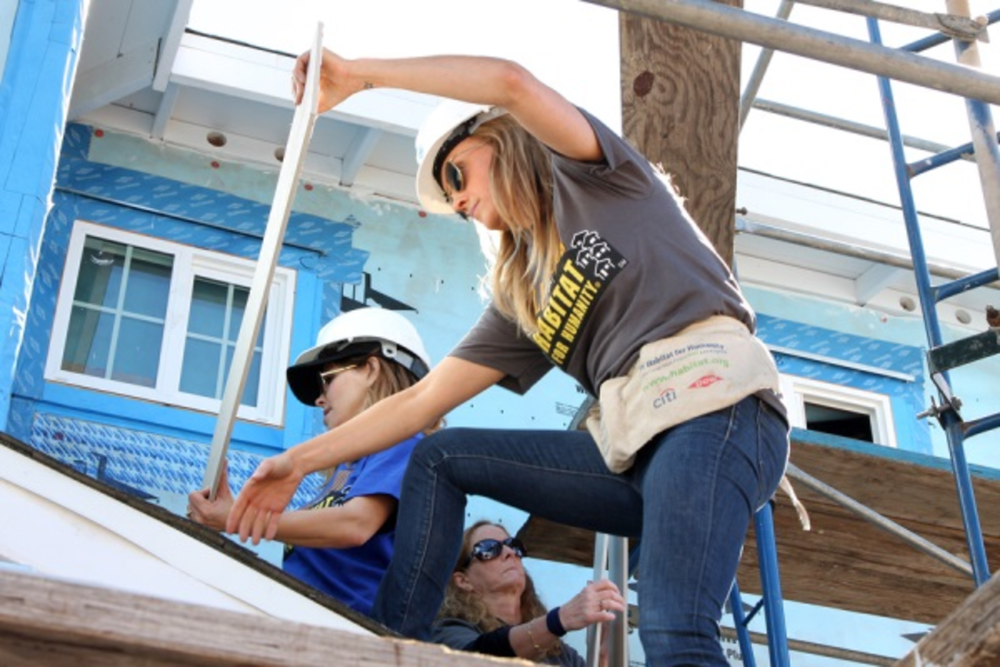Volunteers and donators are the lifeblood of nearly every nonprofit organization. Workers at Habitat for Humanity, however, say the needs go beyond one-time donations and volunteers. To survive and grow, the organization must have a stream of resources fed by repeat donations and volunteerism.
“You need the community to survive,” says Pheobe Brown, deputy director at Habitat for Humanity of Northern Virginia. “When we started, we were an all volunteer-led and -founded organization. So volunteers did all of the work. They also did all of the fundraising. We wouldn’t have existed without volunteers, and that is still true today.”
Brown says that Habitat for Humanity of Northern Virginia, which is part of the pricey Washington, DC metro area, has been around for 25 years and to this day does not accept substantial government funding, which means the not-for-profit needs committed volunteers and donors.
Volunteer Investment
The challenge, however, is figuring out which people in the community are likely to invest more time and money in the organization and which are interested in participating just once. “We asked ourselves how we can help Habitat for Humanity prioritize who they’re reaching out to beyond the donors that they already have,” says Wyatt Grantham COO at Analyze Corporation, a Big Data analytics company. “They needed to analyze all of the people who are currently donating to their cause and understand what it is about those people that’s pushing them to be involved with Habitat for Humanity.” In essence, Grantham says, certain characteristics about a person can provide a window into their psyche and willingness to either start or rev up volunteerism and donations.
“Our ideal characteristics include a spirit of service,” Brown explains about seeking out donors and volunteers. “We want someone who’s really passionate about the mission and who is willing to do whatever it takes to get the job done.” That characteristic of a fiery spirit, Brown says, is not a tangible one and can be hard to spot when searching for and targeting people with Habitat for Humanity’s marketing messages.
Finding Potential Volunteers
So with a tool from Analyze, called Donor Impact, Brown and her team set out to identify the intangible characteristics that would pinpoint passionate repeat volunteers and donors. Grantham says the key was to look at the tangible aspects of a potential volunteer or donor, and piece them together like a puzzle.
“First of all, we started by analyzing all of the people who are currently volunteering or donating to their cause,” Grantham explains. “So through Donor Impact, we analyzed more than 360 unique variables to figure out what was moving them. Once we were able to identify common characteristics that seem to be key characteristics of a donor or volunteer, we were able to then go back through their database and prioritize who [Habitat for Humanity] would reach out to for more money.”
Grantham says workers at Habitat could then also take that same ideal profile, comb through the Northern Virginia area, and identify those who weren’t currently donating but had the makings of someone who would be most likely to donate in the future. Those who show interest in DIY projects, for example, and have more flexible schedules, such as college students, may be prime candidates to receive messages from Habitat for Humanity.
“Now we have a clear vision of who we are messaging,” Brown says. She says although her team has been analyzing Big Data for just the past six months, the results are already affecting future plans with a new goal of refining the message and edifying current and potential volunteers.
“So with this newfound and clearer understanding, we have a lot of hope that we can continue to grow. We have a lot of big plans for our new marketing pool,” Brown says. “We can better educate and raise awareness. It makes all the difference.”






